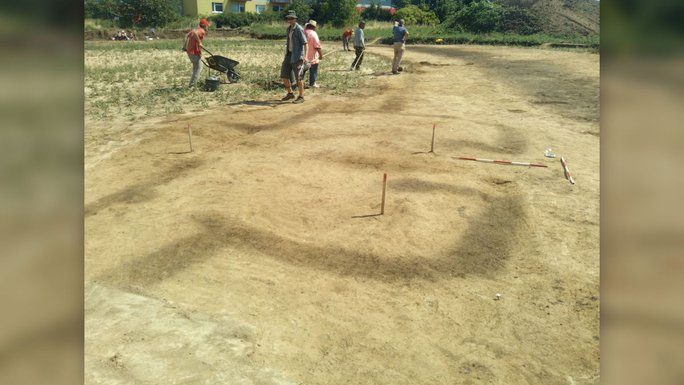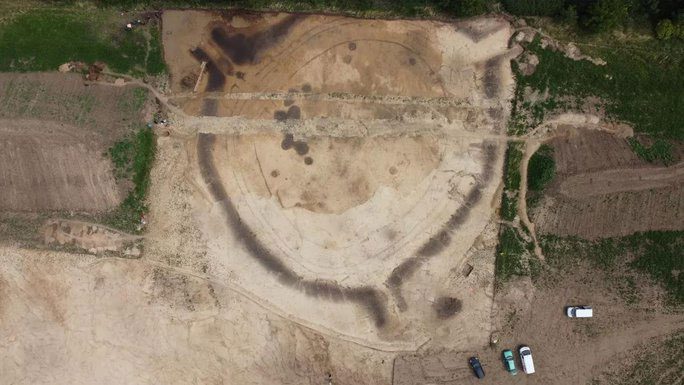A circular structure with a diameter of up to 55 meters, dating back 7,000 years, has recently been excavated in the Czech Republic. It may represent another example of the mysterious Stone Age observatories that have emerged in various European countries.
According to Live Science, this could be one of the oldest pieces of evidence for public architecture found in Europe.
The mysterious structure was revealed on a site in Vinoř, near the capital city of Prague. Unusual features were first discovered in the 1980s by workers installing gas and water pipes, but the site had been “abandoned” for quite some time. A recent excavation has unveiled the incredible scale of the structure.

Excavation site with Stone Age remains appearing hazily after the foundation layer was removed – (Photo: IAP).
This is not just a stone circle; it is clearly a ritual complex with numerous archaeological treasures both inside and around it.
According to Prague International Radio, the structure has a diameter of up to 55 meters, which is equivalent to the height of the Leaning Tower of Pisa. And although it is still too early to draw detailed conclusions, it certainly belongs to the legendary Stroked Pottery culture of the region, according to Jaroslav Řídký, a spokesperson for the Institute of Archaeology of the Czech Academy of Sciences (IAP).
The director of the excavation, Miroslav Kraus, noted that the complete revelation of the structure could provide clues about how it was used.
Archaeologists have found many shards of pottery, animal bones, and stone tools within the site, and from the organic materials, they conducted radiocarbon dating.
The results were truly shocking: This architecture is nearly 7,000 years old, which is over 2 millennia older than the oldest pyramids in Egypt. The record-holding pyramid of Egypt is Djoser, which is nearly 4,700 years old.
This structure features several openings that function as entrances, primarily constructed of stone and ditches, with some areas reinforced by wooden posts and showing signs of mud plastering. It was undoubtedly a public gathering place where ceremonial, astronomical, or community events took place.

Mysterious ‘observatory’ viewed from above – (Photo: IAP).
A similar structure was discovered in Germany in 1991, known as the Goseck Circle, which has a diameter of 74 meters, a double wooden fence, and three entrances. Two of the three entrances correspond to the sunrise and sunset directions during winter and summer, leading to the belief that Goseck is a form of ancient observatory.
Other “newer” circular structures, such as Stonehenge – the famous megalithic circle in England, are also believed to be ancient observatories, with the positions of some stones corresponding to the arrangement of celestial bodies at certain times.
However, the enclosed circular forms with wooden reinforcements and entrances, like the Vinoř and Goseck circles, seem to have disappeared around 4600 BC, after three centuries of popularity, giving way to megalithic forms similar to Stonehenge. Scientists are still working to solve this mystery.





















































